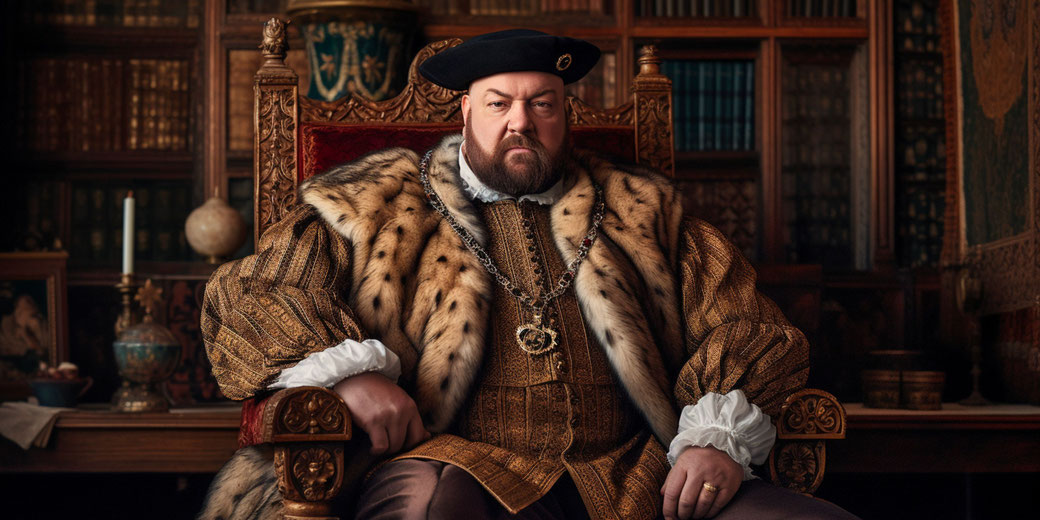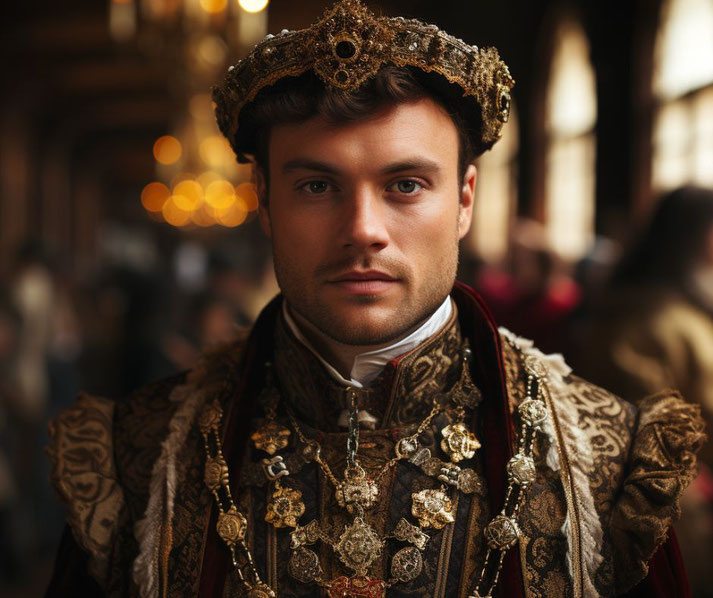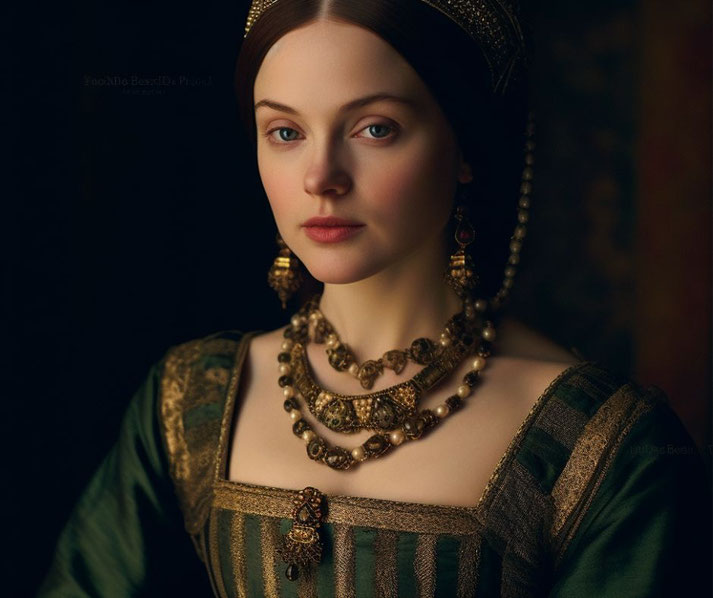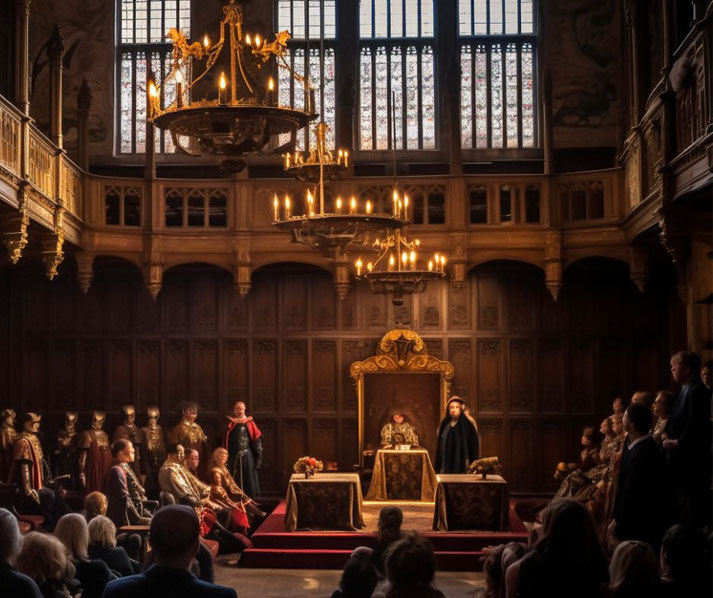King Henry VIII: The power-hungry monarch, his six wives, and the violent birth of a new church

In English history, there are a lot of monarchs who have made dramatic decisions that transformed the nation. Yet, few have been as transformative or as controversial as King Henry VIII.
His reign, marked by romance, rebellion, and religious revolution, forever changed the direction of England and its relationship with the wider world.
How did Henry become king?
Born in 1491, Henry was not initially destined for the throne. Henry VIII was the second son of King Henry VII and Elizabeth of York.
His elder brother, Arthur, was the original heir to the English throne. Traditionally, the eldest son would inherit the throne, while younger sons might be given other titles or roles within the kingdom.
Thus, Henry was initially not expected to become king.
However, fate had other plans, and in 1509, a young and charismatic Henry ascended, promising a reign of prosperity and power.
In 1502, Arthur died unexpectedly, leaving a void in the line of succession. Following Arthur's death, Henry became the heir apparent.
When his father, Henry VII, died in 1509, Henry VIII ascended to the throne when he was 18 years old.
At the time of his coronation, he was seen as a vibrant and charismatic young king, full of potential.

His promising early reign
In the early years of his reign, he was seen as a charismatic, athletic, and well-educated monarch, embodying the Renaissance ideal of kingship.
He initially relied heavily on his advisors, most notably Cardinal Thomas Wolsey, who served as Lord Chancellor and effectively ran the government on Henry's behalf.
During this period, Henry engaged in a series of political maneuvers, forging alliances and participating in military campaigns, such as the Battle of the Spurs against France in 1513.
Additionally, he was deeply involved in the cultural and intellectual life of his court, sponsoring artists, musicians, and scholars, and thereby fostering the English Renaissance.
The lives (and deaths) of his six wives
Henry's marital life is perhaps the most talked-about aspect of his reign. His first marriage to Catherine of Aragon seemed a perfect match, uniting England and Spain.
However, as years passed without a male heir, Henry's eyes wandered. Anne Boleyn, a charismatic courtier, caught his attention.
Their ensuing romance led to a seismic shift in England's religious affiliations.
When the Pope refused to annul his marriage to Catherine, Henry took matters into his own hands.
The Act of Supremacy in 1534 declared him the Supreme Head of the Church of England, marking the beginning of the English Reformation.
Anne Boleyn, though she gave birth to the future Queen Elizabeth I, met a tragic end, executed in 1536.
She was followed by Jane Seymour, who bore Henry a son, Edward VI, but she died shortly after.
Anne of Cleves, Catherine Howard, and Catherine Parr would all, in turn, become queens, each leaving their mark on the king and the country.

Shutting down the monasteries
Beyond his tumultuous love life, Henry's reign saw significant religious transformation.
The Dissolution of the Monasteries not only enriched the royal coffers but also signaled the decline of Catholicism in England.
The monastic lands were either sold off or given to loyal nobles, redistributing wealth and power.
The establishment of the Church of England was not just a product of Henry's personal desires.
It was a statement of English independence from Rome, setting the stage for further religious reforms and conflicts in the years to come.

Later life and death
In the latter part of his reign, King Henry VIII's physical health and temperament underwent significant changes.
Once a robust and athletic young king, he became increasingly obese and plagued by a series of ailments, including a painful leg ulcer that never fully healed.
His deteriorating health was accompanied by bouts of mood swings and paranoia.
Politically, he continued to centralize power and took a more direct role in governance, especially after the fall of his chief minister, Thomas Cromwell.
Henry's religious policies also oscillated, as he vacillated between Protestant and Catholic practices, leading to a period of religious upheaval and persecution.
By the time of his death in 1547, England had been irrevocably changed, both religiously and politically.
Henry's ambitious building projects
King Henry VIII, during his reign, embarked on several ambitious projects that showcased his grandeur, vision, and desire to leave a lasting legacy.
Among the most notable is Hampton Court Palace, a magnificent structure located on the outskirts of London.
Originally acquired from Cardinal Thomas Wolsey, Henry expanded and transformed it into a palatial residence, blending both Tudor and Renaissance architectural styles.
The palace became a symbol of Henry's opulence and power, boasting vast kitchens, grand halls, and beautifully landscaped gardens.
Another significant project was the Mary Rose, a warship that represented the zenith of Tudor naval engineering.
Launched in 1511, the Mary Rose was one of the first ships to carry heavy guns and was a testament to Henry's commitment to establishing a formidable English navy.
Tragically, in 1545, the ship sank in the Solent during a battle.
Was Henry VIII a good or bad king?
Henry's policies and decisions, often driven by personal desires, had profound implications.
His children, Mary I, Elizabeth I, and Edward VI, would each, in their way, grapple with the religious legacy he left behind.
While often remembered for his many wives and his break with Rome, Henry's impact on England was multifaceted.
He centralized power, strengthened the navy, and patronized the arts. Hampton Court Palace and the Mary Rose are testaments to his love for grandeur and naval prowess.
King Henry VIII's reign was a turning point in English history. His personal choices led to political and religious upheavals that still resonate today.
What do you need help with?
Download ready-to-use digital learning resources
Copyright © History Skills 2014-2024.
Contact via email
With the exception of links to external sites, some historical sources and extracts from specific publications, all content on this website is copyrighted by History Skills. This content may not be copied, republished or redistributed without written permission from the website creator. Please use the Contact page to obtain relevant permission.





